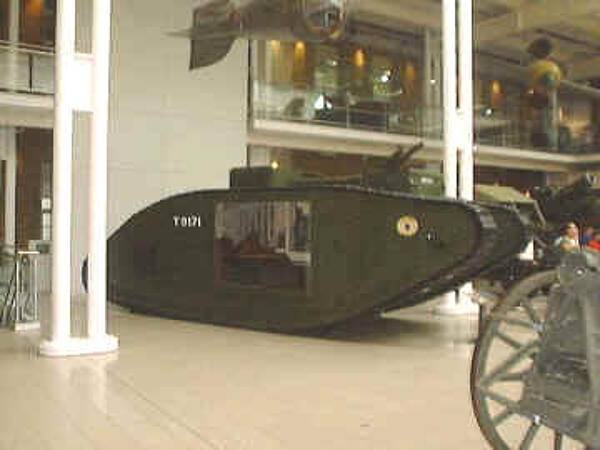Tanks and World War One
Tanks had a varied role in World War One, with varied levels of success. As an unreliable new machine, there were many points during the war where it failed to live up to expectations. However, it also had a huge impact on mobility across the Western Front, which ultimately ended the horrors of trench warfare.
The initial idea for the tank came from the development of farming vehicles, which could easily cross difficult land thanks to the use of caterpillar tracks. Many senior military commanders were initially against pursuing this new form of warfare, preferring to rely on tried and tested cavalry. However, as trench warfare took hold, cavalry effectively became useless resulting in thousands of casualties with little positive impact.
In spite of this, hostility towards the use of armoured vehicles continued, with only a few military commanders considering them the answer to the British Army’s problems. One such commander was Lieutenant-Colonel Ernest Swinton, who had proposed the development of a new type of fighting vehicle in 1914. While many already existed, they were simply not designed to cope with trenches and were often used as gun tractors.
With very little support for his plans, Swinton decided to built an example gun that would fulfil the following criteria:
- A top speed of 4mph
- The ability to turn sharply at top speed
- The ability to climb a 5ft parapet
- The ability to cross an 8ft gap
- A working radius of 20 miles
- The capability to hold ten men, two machine guns and one light artillery gun

As the war continued and the trench stalemate persisted, the drive to find a new weapon with greater mobility became even more intense. Lieutenant W Wilson and William Tritton were the first to develop a ‘tank’ vehicle with caterpillar tracks, and it was named “Little Willie”. This soon developed into “Big Willie”, which became the inspiration for the first Mark 1 tank. Unfortunately, this first tank model struggled to keep its tracks on, losing them within days of being launched. Thankfully, officials were willing to accept teething problems and development continued.
Wilson and Tritton went back to the drawing board, eventually developing a more reliable version that was ready in January 1916. Winston Churchill convinced Douglas Haig to send a representative to see the finished tank, who reported favourably and prompted further demonstrations to take place.
Following a demonstration to Lord Kitchener and Lloyd George in February 1916, 100 “Big Willies” were ordered by the Ministry of Munitions and Ernest Swinton began rapid development of a fighting technique for the new weapons. Initially, Swinton like many others saw the tank as a means of supporting the infantry, rather than a weapon that was able to break German defences alone. He said:
"It seems, as the tanks are an auxiliary to the infantry, that they must be counted as infantry and in an operation be under the same command."
By April, Haig was so desperate to use the new weapon that he ordered the tanks and crews to be ready by 1st June - the start of the Battle of the Somme. However, with no tanks in production and no crews trained this proved impossible. Finding crew members was particularly hard, with very few people at this time possessing any knowledge of mechanical vehicles as well as the military. In spite of this, the disasters that occurred at the Somme and Verdun prompted General Headquarters to order the new weapon ready for use on 15th September.
While the tanks did arrive in Europe by the end of August, there were many problems that faced the crews. One commander wrote:
"I and my crew did not have a tank of our own the whole time we were in England. Ours went wrong the day it arrived. We had no reconnaissance or map reading...no practices or lectures on the compass...we had no signaling...and no practice in considering orders. We had no knowledge of where to look for information that would be necessary for us as tank commanders, nor did we know what information we should be likely to require."
In spite of these issues, 50 tanks proceeded to attack the enemy at the Somme on 15th September 1916. Sadly, only 36 made it to the destination as the other 14 had failed to cope with the churned up landscape. However, those that did make it carried out a successful attack, and so the start of a new - more mobile - era of warfare began.
MLA Citation/Reference
"Tanks and World War One". HistoryLearning.com. 2025. Web.
